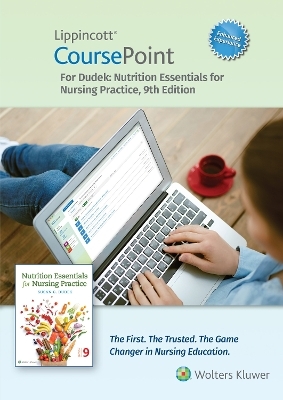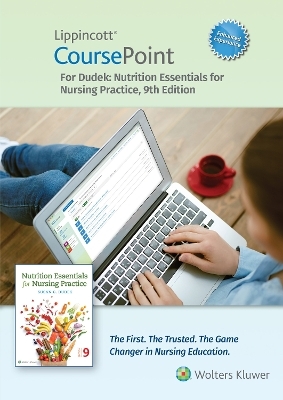
Metabolic Nutrition: An Everyday Approach to Macronutrient Metabolism
Kendall/Hunt Publishing Co ,U.S.
978-1-5249-7430-5 (ISBN)
- Titel nicht im Sortiment
- Artikel merken
Unique to the market, Metabolic Nutrition: An Everyday Approach to Macronutrient Metabolism provides a less complicated and more applicable approach to learning about ATP and the multiple ways that cells can produce and use it.
Metabolic Nutrition presents what happens from the time one takes a bite of food, how one's body digests the food, transports the nutrients to cells in his/her body, and stores it for later use. The publication uses real-life situations to understand metabolism and apply it. In addition, students receive access to the KHQ - online quizzing app to learn and assess key terms/content within the publication.
Based on authors Deborah Good, Matthew Hulver, and Angela Anderson's years of classroom teaching experience, Metabolic Nutrition: An Everyday Approach to Macronutrient Nutrition:
Discusses what happens after one's body has processed his/her most recent meal, and it needs to start relying on stored energy.
Explains how one's body responds to and provides the needed energy when he/she goes from sitting to standing, resting to exercising, and how their body's metabolism changes in response to exercise training.
Talks about how one's body responds when more energy (food) is consumed than it needs and describes metabolism in context of metabolic diseases such as obesity and diabetes.
Section I: Introduction to Macronutrients
Chapter 1: What is Metabolism Anyway?
What is Metabolic Regulation?
Energy Balance
Measuring Energy Balance-Intake and Expenditure
Summary
Points to Ponder
References
Chapter 2: Energy!
Introduction
Adenosine Tri-Phosphate
Making ATP
Macronutrient oxidation
The TCA cycle
The Electron Transport Chain
Chemiosmotic theory for ATP Production
Reactive Oxygen Species and Oxidative Stress
Balancing production and neutralization of free radicals
Superoxide
Hydrogen Peroxide
Summary
Points to Ponder
References
Chapter 3: Macronutrient Metabolism: Turning Carbohydrates into Usable Energy
Carbohydrate Metabolism
Keeping Blood Glucose Levels in Check
Removing glucose from the blood-harder than adding it!
Making and breaking sugars for energy
Pyruvate
Summary
Points to Ponder
References
Chapter 4: Macronutrient Metabolism: Fats for Fuel
Lipids
Giving fats a name
Essentially fat. the essential and non-essential fatty acids
Sugary-lipids—the glycerolipids
Sterols
Phospholipids
Lipoproteins
Let's burn this fat!
Summary
Points to Ponder
References
Chapter 5: Macronutrient Metabolism: Breaking Down Proteins
Amino Acid Structure and Classification
Our amino acids
Side Group Classifications
Sulfur groups
Acidic and Amide forms
Charge
Polarity
Amino Acid Metabolism
Aminotransferases
Deamination
Amine-group disposal
Summary
Points to Ponder
References
Section II: The Fed State
Chapter 6: Let's Eat and Digest
Digestion and Absorption
Carbohydrate Digestion and Absorption
Transport and Distribution of Carbohydrates
Glucose transport and clearance
Glucose transporters
Other monosaccharides
Fat Absorption, Transport and Clearance
Digestion and Absorption
Fat transport and clearance
Protein Absorption, Transport and Recycling
Protein Digestion and Absorption
Amino acid transport and recycling
Summary
Points to Ponder
References
Chapter 7: Carbohydrate Fates in the Fed State
Postprandial fates of glucose
Transcriptional and Post-translational Regulation of Carbohydrate Metabolism
Carbohydrate Sensing Transcription factors
Transcriptional Crosstalk
Post-translational regulation
Hexokinase-transcriptional and post-transcriptional (allosteric) regulation
Glycogenesis
Covalent regulation of glycolysis, glycogenolysis, and glycogenesis
Fructose metabolism-another regulatory point
Glyceroneogenesis
De Novo Fatty Acid Synthesis
An alternate fate for glucose—the Hexose Monophosphate Shunt
Hexosamine biosynthetic pathway
Summary
Points to Ponder
References
Chapter 8: Fat Fates in the Fed State
Triglyceride Synthesis
Phospholipid synthesis
Cholesterol Synthesis
Summary
Points to Ponder
References
Chapter 9: Protein Fates in the Fed State
A Review of proteins and amino acids
Recycling old proteins
Anabolic stimulation of protein synthesis
Essential amino acids
Summary
Points to Ponder
References
Section III: Energy Flux
Chapter 10: Fasting
Post-absorptive Period
What does fasted mean?
It's been 4-6 hours since your last meal, what's going on?
Blood Glucose Homeostasis
Glucagon
Pancreatic Hormone Release
Hormones
Maintaining Blood Glucose
Glycogenolysis
Glycogen Phosphorylase (GP)
Glycogen Phosphorylase Kinase (GPK)
Fatty Acid Metabolism
FAs are the Major Substrate for Energy
Lipolysis
Fatty Acid Uptake
Fatty acid transport into the mitochondria
Beta-oxidation of fatty acids
Regulation
Prolonged Fast
Gluconeogenesis
Ketogenesis
Oxidation of Ketone Bodies
Ketogenesis versus ketoacidosis
Ketogenic diet
Proteolysis in prolonged fasting and starvation
Summary
Points to Ponder
References
Chapter 11: Is Your Metabolism Flexible?
Metabolic flexibility
RQ and RER
Glucose-Fatty Acid cycle
Regulation of the glucose-fatty acid cycle
Pyruvate Dehydrogenase
Phosphofructokinase
Hexokinase/Glucokinase
Acetyl CoA Carboxylase and Malonyl CoA decarboxylase
Putting metabolic flexibility altogether
Metabolic Flexibility in other tissues
Metabolic Inflexibility
Muscle fiber type
Insulin resistance
Insulin resistance works in multiple locations
Summary
Points to Ponder
References
Chapter 12: Let's Exercise
Energy systems during exercise
Creatine phosphate
Anaerobic glycolysis
Fuel Sources during exercise
Low Intensity Exercise
High intensity exercise
The Crossover Effect
Physiological adaptations to exercise training
Glycogen
Mitochondria, oxidative enzymes, capillarization, and muscle fiber type
Other adaptations to exercise
Detraining
Hormones
Amino acids as energy sources during exercise
Summary
Points to Ponder
References
Appendix Fact Sheets
| Erscheint lt. Verlag | 30.8.2018 |
|---|---|
| Verlagsort | Iowa |
| Sprache | englisch |
| Themenwelt | Sachbuch/Ratgeber ► Gesundheit / Leben / Psychologie |
| Medizin / Pharmazie ► Gesundheitsfachberufe ► Diätassistenz / Ernährungsberatung | |
| ISBN-10 | 1-5249-7430-7 / 1524974307 |
| ISBN-13 | 978-1-5249-7430-5 / 9781524974305 |
| Zustand | Neuware |
| Haben Sie eine Frage zum Produkt? |
aus dem Bereich

